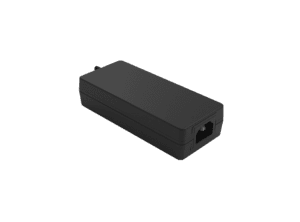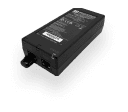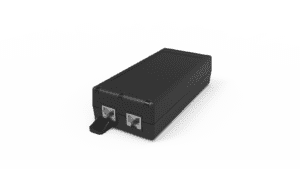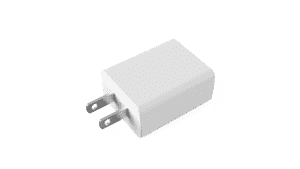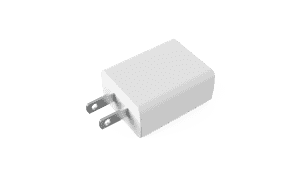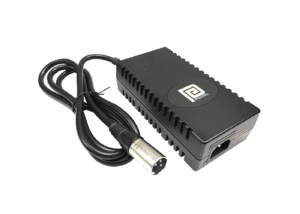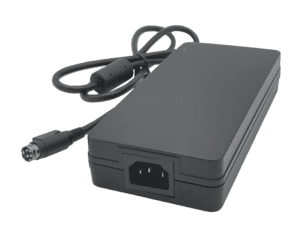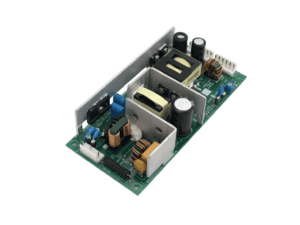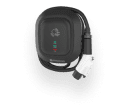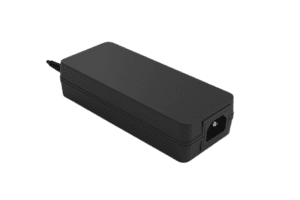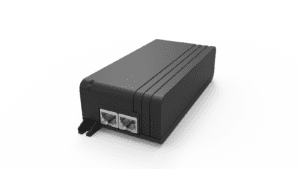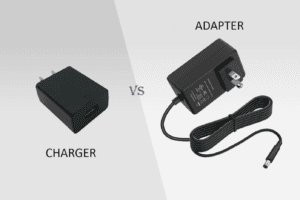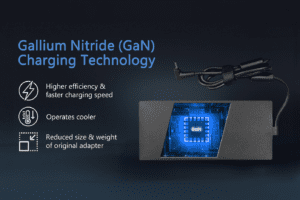BLOG
Robotic Power Supply Design: How to Manufacture 48 V Robotic Power Supplies That Meet IEC 61000‑6‑2 Standards
Table of contents
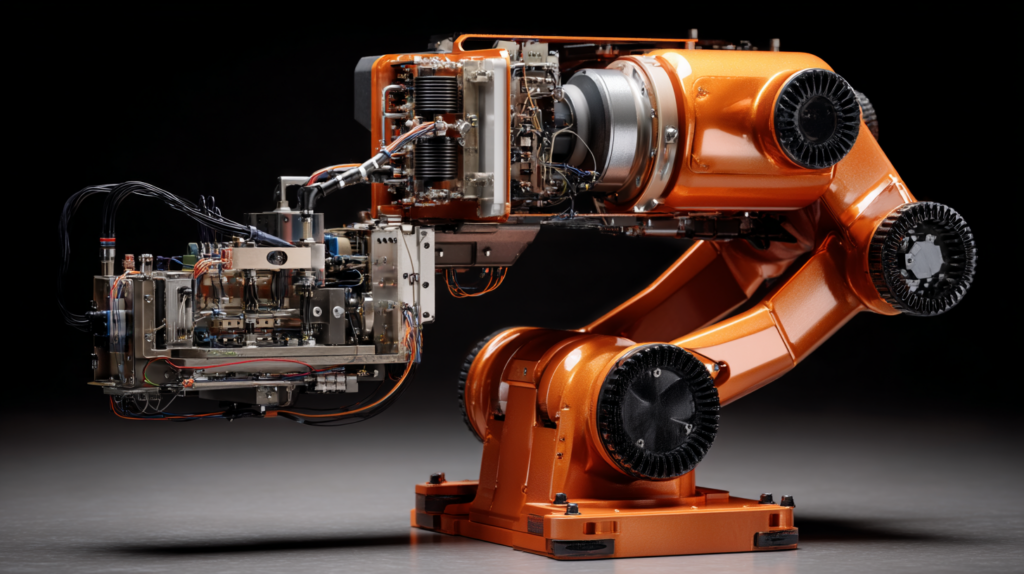
Why Are 48 V Power Supplies Ideal for Robotics Applications?
Robotics systems—whether used in industrial automation, autonomous vehicles, or warehouse logistics—demand compact, efficient, and high-performance power solutions. Among the most common voltage standards across robotic systems is 48 V, offering an ideal balance between energy delivery and electrical safety.
Compared to higher voltage systems, 48 V power supplies reduce insulation requirements and lower the risk of electrical hazards. Compared to lower voltages like 12 V or 24 V, they reduce current draw and associated heat—critical for motor control, servo actuation, and battery-powered systems in motion.
For OEMs, 48 V platforms offer flexibility in scaling robotic functions, supporting everything from onboard processors and sensors to high-torque motors.
Top Features
- Optimized for brushless motors, actuators, and embedded controllers
- Lower current = smaller conductors, less heat loss
- Safe-to-touch voltage while maintaining robust energy output
Top Benefits
- Improved thermal efficiency for compact robotic enclosures
- Better range and duty cycle in mobile and battery-powered platforms
- Compatible with industry-standard battery packs and motor drivers
Best Practices
- Select supplies with tight voltage regulation and fast transient response
- Design for minimal ripple to prevent EMI with sensitive control circuits
- Prioritize modular or configurable designs for different robotic use cases
48 V has become the sweet spot for robotics—offering power, safety, and flexibility in a single platform.
What Is IEC 61000‑6‑2 and Why Is It Critical for Robotic Power Supply Design?
IEC 61000‑6‑2 is the electromagnetic compatibility (EMC) standard that defines immunity requirements for industrial environments, including robotics. Meeting this standard ensures that your 48 V power supply will perform reliably in the presence of electromagnetic disturbances such as nearby motors, switching devices, or RF interference.
This is especially important in robotics, where dozens of components—motors, servos, sensors, wireless modules—can generate or be affected by EMI. A power supply that’s not compliant could introduce system noise, create erratic behavior, or fail certification in end-use applications.
Top Features
- Tested immunity to ESD, radiated RF fields, electrical fast transients (EFT), and surge
- Conducted immunity across power and data lines
- Stable operation during voltage dips and brownouts
Top Benefits
- Reliable performance in EMI-heavy environments like factories or logistics hubs
- Reduced chance of failure, signal drift, or shutdown under electromagnetic stress
- Smoother path to CE marking and international approvals for complete robotic systems
Best Practices
- Choose power supplies pre-certified to IEC 61000‑6‑2 immunity standards
- Include input protection circuits such as MOVs, TVS diodes, and common-mode chokes
- Test full robotic assemblies for susceptibility, not just individual components
EMC is often the hidden cause of robotic instability—designing for IEC 61000‑6‑2 helps eliminate that risk.
How to Design Custom 48 V Power Supplies for Compact and Mobile Robotics
Many robotics platforms operate under strict space and weight constraints. Whether it’s an AGV (Automated Guided Vehicle), a robotic arm, or an exoskeleton, power supplies must be small, efficient, and integrated without compromising performance.
OEMs developing custom 48 V power supplies need to balance thermal management, form factor, and load demands while ensuring regulatory compliance. Intelligent layout and heat dissipation strategies are essential for maintaining uptime and safety.
Top Features
- High power density (W/in³) with forced or passive cooling options
- Wide input voltage range (e.g., 9–60 V) for compatibility with diverse sources
- Fanless operation using conduction or baseplate cooling in mobile units
Top Benefits
- Easier integration into tight spaces or mobile chassis
- Reduced vibration and acoustic noise from cooling fans
- Enhanced system longevity and minimal maintenance in industrial settings
Best Practices
- Design for modularity to support different robotic configurations
- Use shielded enclosures to limit EMI in control board compartments
- Validate power delivery under dynamic load conditions like motor start-stop cycles
A compact 48 V PSU built for robotics should disappear into the system—delivering reliable power without becoming the limiting factor.
CLIENT'S QUOTE
"Phihong’s PoE solutions have made a huge difference for us! Our network runs more efficiently, and we’ve seen real cost savings. We couldn’t be happier!"
How to Ensure Long-Term Reliability in Harsh Industrial Robotic Environments
Robotic systems are often deployed in rugged, high-vibration environments—factories, distribution centers, or outdoor settings where dust, temperature shifts, and mechanical stress are common. In these conditions, long-term reliability becomes a defining factor for power supply success.
OEMs need to engineer power supplies that not only deliver consistent 48 V output but also survive continuous thermal cycling, shock, and exposure to electromagnetic interference. This includes careful component selection, PCB layout resilience, and thermal engineering.
Top Features
- Wide operating temperature range (-40°C to +85°C)
- Conformal coating or potting for moisture and particle resistance
- Vibration-tolerant connectors and internal mounting structures
Top Benefits
- Reduced risk of field failures and production downtime
- Lower total cost of ownership through longer MTBF (Mean Time Between Failures)
- Greater confidence from industrial automation and robotics integrators
Best Practices
- Conduct HALT (Highly Accelerated Life Testing) during design validation
- Design for modular repairability in high-deployment environments
- Use ruggedized enclosures with integrated thermal management features
When a power supply is built to last, it supports more than performance—it supports trust in your robotic platform’s reliability over time.
What Customization Options Matter Most for Robotic Power Supplies?
The growing variety of robotic applications—ranging from collaborative robots (cobots) to autonomous drones—means off-the-shelf power supplies don’t always fit. OEMs benefit from custom power supply solutions tailored to their product’s physical, electrical, and control interface requirements.
Customization may include form factor, mounting points, connectors, control signals (e.g., remote on/off, voltage sensing), thermal interface design, or smart integration with battery management systems.
Top Features
- Tailored mechanical layout to fit inside non-standard enclosures
- Digital or analog interface compatibility (I²C, UART, CAN)
- Integrated protection features (OCP, OTP, UVLO) suited for specific loads
Top Benefits
- Faster integration with unique robotic architectures
- Reduced development time by eliminating redesign of system enclosures
- Better alignment between power behavior and robotic system demands
Best Practices
- Work with a manufacturer that supports low-volume customization and NPI (New Product Introduction)
- Provide full system electrical and mechanical requirements upfront
- Plan for future scalability with modular or upgradable PSU designs
Customization transforms a power supply from a constraint into a performance enabler—essential for cutting-edge robotics.
How Phihong USA Helps OEMs Manufacture 48 V Power Supplies to IEC 61000‑6‑2 Standards
Phihong USA specializes in custom and semi-custom 48 V power supply solutions engineered for advanced robotics applications. With extensive experience in industrial and automation environments, Phihong delivers products designed to meet both IEC 61000‑6‑2 EMC immunity standards and the real-world challenges of mobile and embedded robotic systems.
Our services include:
- Pre-certified 48 V power modules with EMC and environmental testing
- Custom mechanical and electrical designs for integration into robotics chassis
- EMI mitigation, remote diagnostics, and smart control features
- Full lifecycle support from prototyping and compliance testing to scalable production
Whether you’re building collaborative robots for clean environments or ruggedized AGVs for warehouse automation, Phihong ensures your power supply is efficient, reliable, and standards-compliant—ready to meet global market demands.
Let’s power your robotics innovations with precision and confidence.
Visit www.phihong.com or contact sales@phihongusa.com to schedule a consultation.

Contact Our Team Today!
Our dedicated sales team and international partners are prepared to support you with your latest projects and initiatives globally.
Explore More with Phihong USA
As we conclude our exploration of PoE technology, it’s evident how these innovations are streamlining power and data integration across various industries. Phihong USA stands at the forefront of this technological advancement, offering a diverse range of power solutions designed to meet the evolving needs of modern industries.
Phihong USA’s extensive product lineup includes:
- Power over Ethernet (PoE) Solutions: Delivering reliable power and data transmission over a single cable, ideal for simplifying network installations and reducing costs.
- AC/DC Adapters and Power Supplies: From compact adapters to industrial-grade power supplies, Phihong provides solutions that ensure efficiency and reliability in various applications.
- Battery Chargers: Customizable chargers for lithium-ion and lead-acid batteries, supporting a wide range of power requirements for mobility and industrial applications.
- Medical Power Supplies: Specialized power solutions designed to meet the stringent requirements of the healthcare industry, ensuring safety and reliability.
Phihong USA is committed to innovation and excellence, continually developing products that meet the highest standards of performance and reliability. Their global reach and dedication to customer support make them a trusted partner in powering the future.
Here are some useful links to explore Phihong USA’s offerings further and bring in new potential clients:
Visit Phihong USA to discover how their advanced power solutions can support your business needs. Whether you’re looking to upgrade your network, or find reliable power supplies, Phihong USA has you covered.
By choosing Phihong USA, you’re partnering with a leader in power technology, ensuring your operations run smoothly and efficiently with top-tier power solutions. Contact Us today!
FAQ
Why is 48 V considered the optimal voltage for robotics applications?
48 V has become a standard in robotics because it offers a safe and efficient power delivery balance. It’s high enough to reduce current draw—meaning smaller conductors, less heat, and higher overall efficiency—yet low enough to remain within the SELV (Safety Extra Low Voltage) range, eliminating the need for complex insulation and safety protocols required at higher voltages.
Many robotic components—including BLDC motors, actuators, sensors, and embedded controllers—are optimized for 48 V operation. This voltage also aligns well with commonly available lithium-ion battery packs, making it ideal for mobile robots and AGVs.
Using 48 V allows OEMs to:
- Improve motor response and torque efficiency
- Reduce weight and bulk in wiring harnesses
- Design safer systems for environments with human interaction
Ultimately, 48 V hits the “power sweet spot” for robotic designs—delivering reliable energy without compromising space, safety, or heat management. It’s especially valuable in applications that require both performance and compactness.
What is IEC 61000‑6‑2, and why should robotic power supplies meet this standard?
IEC 61000‑6‑2 is the EMC immunity standard that applies to electrical and electronic equipment used in industrial environments—including robotics. It defines how a device should respond to a variety of electromagnetic disturbances such as electrostatic discharge (ESD), electrical fast transients (EFT), radiated RF interference, and power surges.
Robotic systems operate alongside multiple sources of electrical noise: inverters, servo motors, control systems, and wireless communication devices. If a power supply isn’t immune to EMI, it may cause erratic behavior, sensor malfunction, or system shutdown—especially in mission-critical automation.
Meeting IEC 61000‑6‑2 ensures:
- Robust and predictable power delivery, even in electrically noisy environments
- Compliance with CE and global EMC regulations
- Higher confidence from OEM integrators and end users
For OEMs, choosing a 48 V supply that already meets this standard means fewer issues during system-level certification and a faster path to market.
Can off-the-shelf power supplies be used for robotics, or is customization necessary?
While off-the-shelf power supplies may work for some generic applications, robotics often requires customization to meet space, performance, and integration needs. Robotic systems are highly diverse—they can be mobile, modular, lightweight, rugged, or highly compact—and their power requirements reflect that complexity.
Off-the-shelf supplies often fall short in areas like:
- Form factor: Too large or not mountable within robotic chassis
- Interfaces: Lacking support for smart communication protocols or system-level feedback
- Environmental resilience: Not tested for vibration, dust, or temperature extremes
Custom or semi-custom power supplies solve these issues by providing tailored solutions with optimized PCB layouts, thermal management, connector types, and EMC compliance built in. OEMs looking to differentiate their robotic products or ensure long-term reliability typically choose custom designs to future-proof their platforms and avoid costly workarounds.
How can OEMs design for long-term reliability in 48 V robotic power systems?
Long-term reliability in robotics starts with a focus on thermal efficiency, electrical protection, and environmental durability. Robots often operate around the clock in challenging environments—meaning their power supplies must handle continuous load, electrical transients, and mechanical stress without failing.
OEMs should prioritize:
- Wide temperature components and passive cooling strategies to eliminate points of failure
- Conformal coating or sealed enclosures for dust, humidity, or moisture exposure
- Transient protection using MOVs, surge suppressors, and circuit redundancy
Beyond hardware, implementing smart diagnostics and health monitoring features allows predictive maintenance and minimizes unplanned downtime. When integrated thoughtfully, these design practices contribute to a higher MTBF (Mean Time Between Failures), improving product reputation and reducing warranty or service costs.
Reliability isn’t a single feature—it’s the result of dozens of smart choices across every aspect of power supply design.
How does Phihong USA support robotic OEMs building 48 V power supplies?
Phihong USA offers a complete suite of services for OEMs manufacturing 48 V power supplies for robotic systems, with a focus on industrial-grade reliability, EMC compliance, and tailored integration.
With global manufacturing capability and decades of experience in power engineering, Phihong supports:
- IEC 61000‑6‑2 compliant PSU designs with EMC test data and documentation
- Custom mechanical layouts and connector configurations for embedded systems
- Smart control interfaces for integration with robotic controllers and battery packs
- Rugged enclosures and thermal designs for mobile and harsh environments
- Pre-compliance and lifecycle testing support to accelerate time to market
Whether you’re building robotic arms, AGVs, drones, or smart factory automation, Phihong provides high-efficiency, high-uptime solutions that ensure your robots are powered with precision and safety.
Start your next project at www.phihong.com or reach out to sales@phihongusa.com for a consultation.

